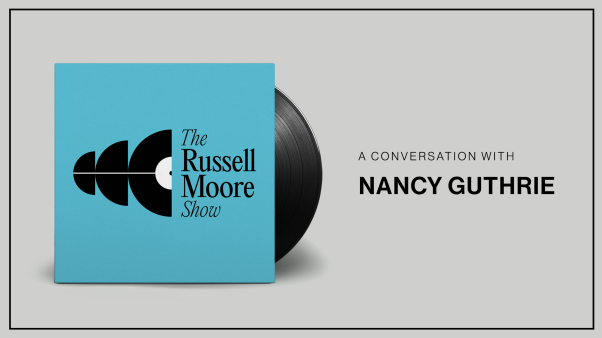In 1817, the Romantic poet and critic Samuel Taylor Coleridge famously defined the imagination as the imago Dei at work in every human mind, helping us first to perceive the world around us and then to creatively reimagine it. For Coleridge, himself a Christian, people think in images because we were first thought into an image of God by God himself.
The Evangelical Imagination: How Stories, Images, and Metaphors Created a Culture in Crisis
Baker Pub Group/Baker Books
304 pages
$16.17
In The Evangelical Imagination: How Stories, Images, and Metaphors Created a Culture in Crisis, Karen Swallow Prior examines the history of the imagination alongside the history of evangelicalism, exploring how the two converge.
Prior warmly welcomes readers into this book as she would students into her classroom. She owns a long and distinguished career as a popular professor of literature and as a prolific writer on the intersection of faith, reading, and culture. Her chief area of academic interest lies with Britain’s Victorian period (Queen Victoria reigned from 1837 to 1901) and its influence on contemporary culture.
Victorian mores, ideals, and developments play major roles in The Evangelical Imagination. Yet Prior’s work ranges widely, arising from years of reading, teaching, writing, researching, worshiping, and studying. As she notes, “There is no limit to the things that fill the evangelical imagination. And there is, of course, no one evangelical imagination.”
As creatures made in God’s image, we are necessarily spiritual thinkers. When we fail to cultivate thoughtful faith and faithful thought, we ourselves wither, and we risk corroding others. Prior therefore urges us to examine how we think alongside what we think—and, ultimately, for whom we think.
All these questions point back to our imaginations, both in a personal sense and in a broader, more communal sense. This is where many of our deepest beliefs are rooted, often without any tangible awareness of the influences that helped them take root. “The problem,” she writes, “isn’t so much that a great deal of human experience and understanding depends on interpretation but that we don’t always recognize that it does.”
Prior thus positions her book as a wake-up call to thoughtful evangelicals. “Wrong interpretation is dangerous, and we must strive to avoid it,” she warns. “But lack of awareness that one is interpreting and that one interprets in community, within a tradition, is more dangerous.”
The Evangelical Imagination serves the work of thoughtful interpretation by considering the most powerful motifs feeding the current evangelical movement, many of which date back to the Victorian period or before. Prior describes the Victorian age as a heady one marked by “rapid change, optimism, prosperity, and progress.” It was also shaped by an increasingly influential evangelical faith inherited from the previous century.
From the vantage point of the Victorian period, we can see the reservoir of images inherited by the evangelical imagination and trace their influence down to the present day. As Prior argues, many defining characteristics of American evangelical culture might be less Christian than Victorian.
Over the course of her survey, Prior appeals to literature, visual art, philosophy, psychology, and even pop culture. Her illustrations, taken from both the Victorian age and more recent periods, are remarkably wide ranging. We see, for instance, the “everyman” allegory from John Bunyan’s Pilgrim’s Progress explored alongside Warner Sallman’s 1940 Head of Christ painting, an enduringly popular piece of devotional art. We see incisive analysis of such trends as the evangelical appropriation of self-help culture and the proliferation of end times literature like the Left Behind series.
Prior organizes her book around ten central metaphors, all of which have biblical roots, even if those roots have gotten entangled in cultural weeds: awakening, conversion, testimony, improvement, sentimentality, materiality, domesticity, empire, reformation, and rapture. As Prior argues, each of these metaphors underwent a specific cultural transition during the Victorian period. And each has flowed into the modern evangelical imagination, in ways both helpful and not so helpful.
In discussing the “awakening” metaphor, Prior considers how dreams lead to truth. This theme runs through Scripture and in turn through the larger Christian literary tradition, where visions often precede spiritual awakenings. In 18th-century America, the image of waking from spiritual sleep helped fuel a series of revivals fittingly known as the Great Awakenings. Closely related is the idea, as Prior puts it, that “the trap of an immoral lifestyle can awaken a spiritual hunger.” She examines 19th-century interest in this connection through William Holman Hunt’s 1853 painting The Awakening Conscience, which depicts stirrings of spiritual insight alongside personal responsibility.
Today, of course, one prominent echo of “awakening” to spiritual and moral truth is the language of being socially and politically “woke”—language that divides evangelicals as surely as it divides America at large. For Prior, one need not embrace a comprehensive progressive agenda to find value in the idea of “waking up” to a new reality, such as when we develop compassion and awareness by “looking at one’s self through the eyes of others,” in words she borrows from W. E. B. Du Bois. She worries that too many evangelicals, often “asleep” to injustice, are guilty of “weaponizing” wokeness as a slur. “To destroy a metaphor,” she observes, “is to destroy more than a word.”
Next, Prior takes on another metaphor central to the evangelical imagination: conversion. She cites Henri Nouwen’s characterization of true Christian conversion as “the individual equivalent of a revolution.” Yet despite the Bible’s command to make disciples of all nations, our emphasis on the language of being “born again” has overshadowed the importance of nurturing the life of faith. Put another way, there is so much fuss over the wedding that once the confetti is thrown and the champagne runs dry, we can’t be sure the newlyweds know how to live together in relationship. “Woe to us,” Prior warns, “if we fail to see what exactly we are asking people to convert to.”
Another chapter examines how the ideal of domesticity assumed its place in modern evangelical culture. As Prior explains, the kind of domestic vision encouraged by Victorian evangelicalism was bolstered by the Industrial Revolution. With the rise of the middle class came a dramatic shift from rural to urban living, which gave the notion of “home” a more self-contained feel, characterized by individual apartments and anonymous dwellings. Any man could now have his “castle,” with a wife to make it his refuge. And improvements in reducing child mortality birthed a cult of the child, driven by educational philosophies and literature geared toward their flourishing.
With a culture of domesticity came a culture of sentimentality, something Prior blames for the shallowness of much evangelical art. Sentimentalism aims at comfort rather than correction; it softens edges rather than clarifies them. Drawing on Flannery O’Connor’s memorable comparison, Prior likens sentimentality to pornography, both of which “sever the experience (emotional in the first case, sexual in the latter) from its meaning and purpose.” Echoing the poet John Keats, she concludes: “In reality, you can’t have beauty apart from truth. Beauty apart from truth and goodness is mere sentimentality.”
Prior’s chapter titles can appear whimsical, in that they rely on unlikely groupings. (Her conversion chapter, for instance, promises an analysis of “Language, Dr. Pepper, and Ebenezer Scrooge.”) At worst, they can seem intended for shock value. (Her chapter on sentimentality carries the subheading “Uncle Tom, Sweet Jesus, and Public Urination.”) But as you read each chapter, you come to appreciate a host of profound connections. A butterfly effect runs through the book: One seemingly disparate thing evokes and affects another.
Undergirding Prior’s consideration of individual metaphors is a comprehensive metaphor. “If evangelicalism is a house,” as she supposes, “then these unexamined assumptions are its floor joists, wall studs, beams, and rafters—holding everything together but unseen, covered over by tile, paint, paper, and ceilings. What we don’t see, we don’t think about. Until something goes wrong and something needs replacement. Or restoration.”
How do we go about repairing today’s evangelical house? How do we distinguish cultural Christianity from the genuine article? For Prior, this begins with a renewed commitment to taking every thought captive and making it obedient to Christ (2 Cor. 10:5).
She thereby challenges us to see things anew: to look with reopened eyes upon metaphors that are richly laden yet buried beneath the rubble of familiarity. But ultimately, she argues, we must ask God for the kind of deep healing that only arises from faith. And faith, essentially, is an imaginative act, wherein God opens our eyes and we truly see.
In Art and Faith: A Theology of Making, Makoto Fujimura explains the centuries-old Japanese art of kintsugi, which involves repairing beloved but broken pottery. Fractured areas are mended with a precious lacquer containing gold, silver, or platinum.
For Fujimura, kintsugi offers a metaphor for God’s redemptive work: Our brokenness is veined through by the blood of Christ. The result is not merely restoration but new creation, on both an individual and a cultural scale. Prior’s book helps us see that our own house can be salvaged. Beauty indeed comes from ashes.
Reading The Evangelical Imagination is akin to enjoying a lively conversation over a cheering yet bracing cup of tea. I can imagine gathering with Prior around our Father’s table, in our Father’s house—each with our cracked cups threaded through with gold and made more valuable for the repair.
Carolyn Weber is a professor at New College Franklin in Franklin, Tennessee. She is the author of the memoirs Surprised by Oxford and Sex and the City of God.











